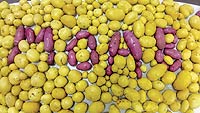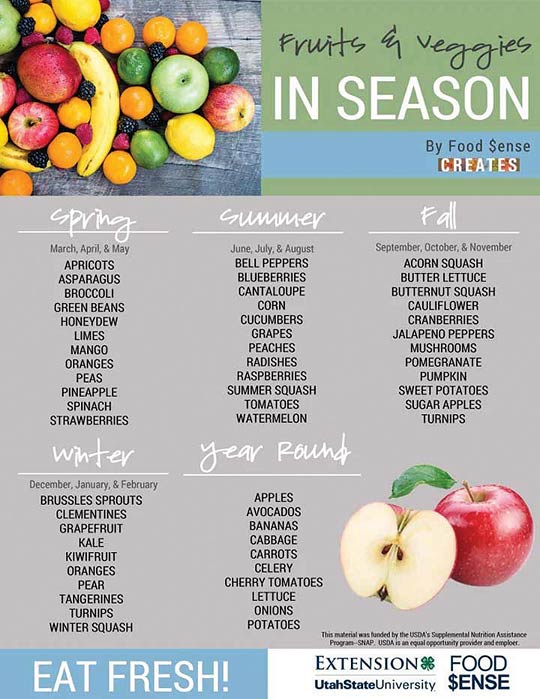|
|
SUSTAINABILITY HAPPENINGS - November 2021
|
Moab Grown Potatoes at Moab Manna
|
.jpg) “Potatoes aren’t grown in Moab!!” So said a stranger in Price, UT, last year to the driver from the state food bank in SLC. He was enroute to pick up thousands of pounds of potatoes grown by the Seventh-day Adventist church project – Moab Manna. The success of the project was made possible by over a hundred and forty community volunteers. Just now in its second season, the potato field has moved to a site very close to town on the Our Villages property at the corner of 500W and Byrd Ave. “Potatoes aren’t grown in Moab!!” So said a stranger in Price, UT, last year to the driver from the state food bank in SLC. He was enroute to pick up thousands of pounds of potatoes grown by the Seventh-day Adventist church project – Moab Manna. The success of the project was made possible by over a hundred and forty community volunteers. Just now in its second season, the potato field has moved to a site very close to town on the Our Villages property at the corner of 500W and Byrd Ave.
Already dozens of volunteers have contributed hundreds of hours to the project in 2021, prepping, planting, weeding, watering etc. Harvest, also known as “The Grand Potato Hunt,” is about to launch, in the first week of November. The potato quality is a night-and-day improvement over last year. The growing conditions are a nice sandy-loam soil with no rocks. The potatoes are four different varieties of organic, low glycemic with excellent yield and food value. There are red potatoes, white potatoes, and yellow potatoes.
 Contrary to some opinions, potatoes ARE grown in Moab – at Moab Manna. Once again, tens of thousands of pounds are expected. The food is being shared with the Navajo Nation, the Food Bank and any community members that would like some. Unlike last season, a different harvesting machine will be used – one that will put the potatoes directly into bins. Even with the improved harvesting technique, there will be lots of volunteer help needed to sort, pack, and distribute the food. The Seventh-day Adventist Church aims to contribute to local food security and improved nutrition and anyone with interest is welcome to help and to also enjoy potatoes! Contrary to some opinions, potatoes ARE grown in Moab – at Moab Manna. Once again, tens of thousands of pounds are expected. The food is being shared with the Navajo Nation, the Food Bank and any community members that would like some. Unlike last season, a different harvesting machine will be used – one that will put the potatoes directly into bins. Even with the improved harvesting technique, there will be lots of volunteer help needed to sort, pack, and distribute the food. The Seventh-day Adventist Church aims to contribute to local food security and improved nutrition and anyone with interest is welcome to help and to also enjoy potatoes!
For more information about harvest times and how you can be involved please contact Pastor Nathan James at njames@nevadautah.org or 435.259.5545
|
The Art of Winter Sustainability
|
As the leaves transform from a lush green to burnished golds and fiery reds like the brilliant palette of a painter’s palette, we consider a similar change in terms of sustainability. What once was useful in the spring and summer, no longer serves us. It is as if the inspiration has left the room or writer’s block has caused us to throw our writing utensils down in frustration. By looking at sustainability with a fresh eye, we can find a new angle that inspires us all over again.
Art euphemisms aside, practicing effective and accessible environmentally focused actions takes some clever maneuvering and a bit of research. Upon initial glance, articles and websites advertised “simple” solutions such as installation of solar panels, re-doing your house’s insulation, replacing old windows with more energy efficient models along with other various home improvement tips and tricks. These are fantastic pieces of advice, but not applicable to the red rocks of Utah’s playground that we call home.
The residents of Moab are varied and unique, with many living a transient life while staying in camper vans, rental homes, apartments, or some other means of shelter that cannot be altered in a significant way. The flip side of the argument is tourism, in and out before true “winter impact” can be measured. We can encourage tourists to practice sustainability, but in the off-season, residents and businesses of Grand County and surrounding communities can follow a handful of straightforward guidelines to lessen their environmental footprint during the winter months. Winter may be a season known for survival, yet we can make every effort to successfully thrive and create a masterpiece, a not-so-subtle nod to the glorious bit of land we live on, that others can enjoy your years to come.
1- Insulation Gaps & Temperature Regulation: Seek out potential sources of drafts by examining window and door for air leaks. Gaps and holes can temporarily be fixed with insulation materials like weather stripping or caulk. Consider the use of insulated curtains to block potential window drafts as well. Be smart with your home’s thermometer – turn down the heat when away or asleep. If you have ceiling fans, turn them to run counterclockwise. This will redistribute the heat in your home by pushing trapped hot air downward. Consider the old-fashioned way of bundling up with an extra layer of clothing while at home before turning up that thermostat an extra degree!
2- Winter Composting is a Thing! Most likely your stream of compostable kitchen waste won’t diminish because of freezing temperatures and snow on the ground. Fortunately, it is absolutely possible to continue successfully composting during the winter. You can even begin composting for the first time! Consider doing some research on how to begin composting or how to effectively continue composting during the season of frost and bare limbs.
3- Shop Locally & Seasonally: Use this handy dandy “Food $ense” guide created by Utah State University to shop smart and sustainably.
4- Vehicle Care & Winterization: Don’t leave your car running/idling. Sure, it might feel nice to strap into a warm vehicle but this practice unnecessarily increases emissions and pollution in the air. Try keeping a pair of gloves, toasty hat, and thick gloves in your car instead. Also, be smart when it comes to selecting curbside de-icers. Some de-icers contain chemicals that can be harmful to pets, children, and the environment. If possible, look for safer, eco-friendly alternatives such as sand and sawdust that apply traction to icy surfaces without using harmful chemicals.

|
|
|
|
|
|
|
© 2002-2024 Moab Happenings. All rights
reserved.
Reproduction of information contained in this site is
expressly prohibited.
|
|